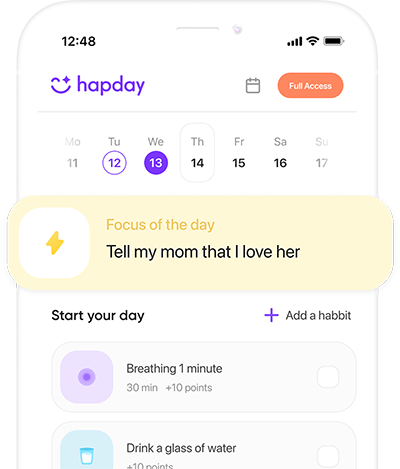Table of Contents
- Unpacking PTSD
- Where Journaling Fits In
- Tips for Effective Journaling
- The Knots of Journaling
- Wrapping It Up
Unpacking PTSD
Let’s paint a picture of PTSD—it’s not just the commonly known flashbacks. It’s an intricate weave of symptoms that can turn daily life upside down. Statistics from the National Center for PTSD reveal that nearly 8 out of every 100 people will experience it at some point. For women, the risk doubles. The symptoms? They fall into four haunting categories:
Intrusive Memories
Flashbacks or nightmares—these aren’t mere thoughts. They’re full-bodied experiences that can sweep someone away to the heart of their trauma.
Avoidance
Avoiding certain places, people, even conversations—it’s as if invisible barriers sprout around all things tied to the traumatic event.
Negative Thinking and Mood
Suddenly, the world appears dim, thoughts turn toxic, and relationships crumble like dried leaves. Memory and hope seem to slip through one’s fingers.
Heightened Reactions
Nerves that flinch at the softest sounds, sleep stubborn to come—the body and mind remain on high alert, preparing for terrors unknown.
Where Journaling Fits In
Now, let’s talk about putting pen to paper. It sounds simple, perhaps deceptively so. Yet, journaling offers a landscape where emotions can breathe, stretch, and sometimes break free.
Why Journaling Works Wonders
- Emotional Release: There’s a strange magic when ink meets paper—it becomes a safe landmark where buried emotions can surface. This release, much like unclogging a drain, can ease overwhelming feelings.
- Cognitive Restructuring: Imagine organizing a cluttered attic—journaling asks you to sort through thoughts, making room for clarity. A study—wait, make that the 2023 meta-analysis—indicates that this practice can reorganize muddled thoughts and alleviate PTSD’s grip.
- Symptom Relief: And yes, journaling’s not just for the soul. It tangibly decreases PTSD symptoms. A study by a group of psychologists whispered this finding; their expressive writing participants reported feeling lighter, less burdened.
- Self-Awareness: Like polishing a mirror, journaling can sharpen self-awareness, helping individuals spot triggers lurking in their daily lives.
- Coping Skill Enhancement: Within the pages, new strengths can quietly unfurl—coping mechanisms discovered and honed over time.
Exploring Styles for PTSD
Not all journaling wears the same hat. Each variety offers a different angle of healing, akin to finding that perfect chair after a long day.
Expressive Writing
This free-form, uncensored spill onto paper can act as a balm. Dr. James Pennebaker, who’s something of a wizard in this field, showed how letting words flow can bring emotional clarity and peace.
Gratitude Journaling
While life often forces a focus on storms, gratitude journaling redirects attention to sunny patches. A little note here of what one cherishes, and a study claims happiness can blossom, lightening the load for those battling PTSD.
Bullet Journaling
For those who crave structure amidst chaos, bullet journaling offers a neat symphony of lists and symbols to tame the day’s tasks and track mood shifts.
Art Journaling
Sometimes, words fall short. Art journaling lets emotions splash in colors and shapes, giving voice to those hard-to-articulate feelings.
Tips for Effective Journaling
The trick to unlocking journaling’s potential lies in creating a consistent, authentic practice.
Creating a Safe Haven
First off, craft a cocoon for your writing—a space where interruptions dare not intrude. Safety breeds the honesty journals thrive on.
Establishing Routine
Routine transforms journaling into a reliable ally. Whether dawn’s first light or twilight’s embrace, a regular slot can embed this practice into life’s tapestry.
Embracing Imperfection
Grammar police, begone! Here, the focus is raw, unfiltered expression.
Reflecting On and Learning From Entries
Occasionally leaf through pages past; they whisper tales of growth, understanding, and evolution.
Professional Integration
For deeper insights, some share journal entries with a therapist. This partnership can transform solitary reflections into a therapeutic dialogue.
The Knots of Journaling
Like any tool, journaling isn’t a perfect fit for all. Some risk opening wounds they’re not ready to inspect, and motivation can fade like a forgotten resolution.
Navigating Emotional Swells
It’s wise to tread carefully. If writings touch raw nerves, pause. Listen to your emotional barometer.
Privacy Worries
In a world where privacy feels fragile, securing one’s journal—be it lock or password—can provide peace of mind.
Wrapping It Up
Journaling stands as a quiet testament to resilience, offering a personalized journey of healing. While it won’t replace traditional therapeutic paths, the magic of self-reflection and emotional expression it fosters can complement them beautifully. Whether through expressive narratives, heartening gratitudes, or art’s boundless release, journaling beckons with promises of transformation. So why not turn to the page and let it begin? In my decade of practice, I’ve seen countless times how this simple act can unearth profound healing—an insight rooted in compassion and firsthand experience.


I absolutely love the idea of using journaling as a tool for healing! It’s fascinating how putting pen to paper can help us process our emotions. I’ve found that expressive writing really allows me to explore feelings I didn’t even realize were buried deep inside. It’s like therapy, but in my own time and space.
I agree! Journaling has been such a game-changer for me too. It’s like having a conversation with myself without judgment. What kind of journaling do you find works best for you?
It’s interesting how much we can learn about ourselves through writing. Do you think technology, like apps, could enhance the journaling experience?
This article really captures the essence of what PTSD feels like and why journaling is so essential. The points on emotional release and cognitive restructuring are spot-on! I’ve personally noticed significant shifts in my mood when I consistently journal.
It’s incredible how effective journaling can be! Sometimes, all it takes is a few minutes of reflection to feel lighter. Have you tried gratitude journaling? It always lifts my spirits!
“Cognitive restructuring”—what a fancy term! But it makes total sense; sorting out thoughts does help clear the mental clutter.
“Navigating emotional swells” really hit home for me. Sometimes I start writing and find myself overwhelmed by emotions that surface unexpectedly. It’s hard but also liberating in a way.
“Liberating” is such an important word here! Learning to embrace those emotions instead of pushing them away can be tough but worthwhile.
“Emotional barometer”—love that phrase! It’s crucial to check in with ourselves before diving too deep into our feelings.
Art journaling sounds so intriguing! I’ve always thought words were my only outlet, but painting or drawing could express things that words can’t capture as well.
I’ve never really considered the benefits of bullet journaling before reading this article! A structured approach might help keep me on track while dealing with PTSD.
I love how this emphasizes creating a safe haven for writing! Finding that perfect cozy spot can make all the difference in being able to express oneself freely.
Honestly, I’ve been hesitant about sharing journal entries with my therapist…but it sounds like it could open up new avenues for understanding myself better!
While I see the benefits of journaling mentioned here, I’m still skeptical if it’s truly effective for everyone… Can it really replace professional help?